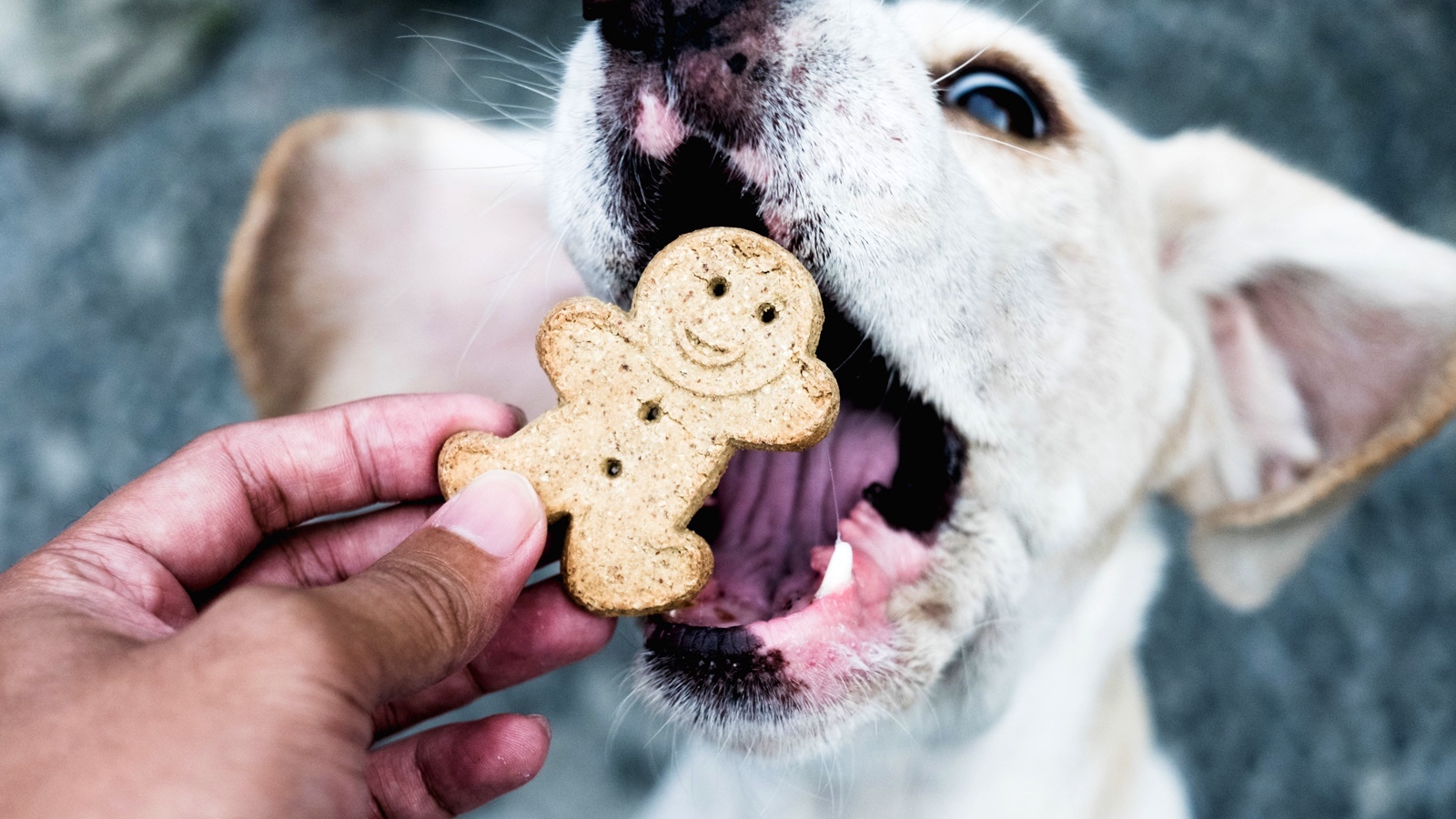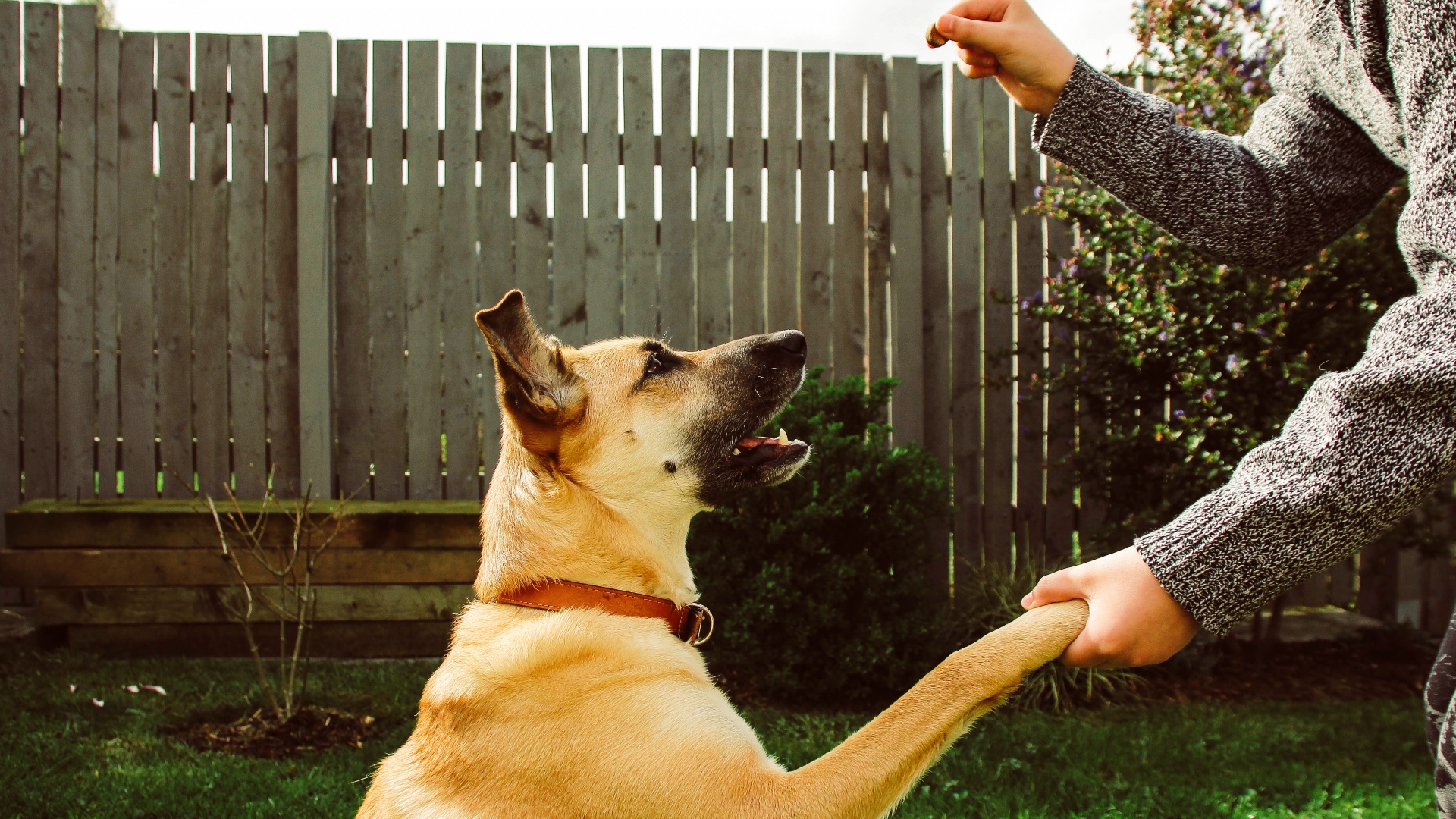How many treats per day for a dog?
Dogs love a tasty treat, but how many treats per day for a dog is safe? We reveal the perfect daily portion and which treats are best for your canine companion

Treats are a valuable component of training and the human-animal bond, but is there a limit on how many treats per day for a dog is safe? Yes, there is a safe upper limit! Allowing your dog to overindulge in even the best dog treats can result in a number of harmful effects, including weight gain, gastrointestinal effects, and even nutritional deficiencies.
You don’t need to forgo treats entirely; after all, treats are an important tool that we use to train our dogs and enhance our bond. However, it’s important to be aware of how to safely incorporate treats into your dog’s diet, so you can minimize the risk of harmful effects.
Can you give a dog too many treats?
It is absolutely possible to give a dog too many treats! Think about human nutrition: it’s okay for us to eat cookies and ice cream occasionally, but a diet that is high in “treats” can have a number of negative effects. The same is true for our dogs.
First, feeding too many treats can cause gastrointestinal upset. Treats are typically very rich and higher in fat than regular dog food. Offering a large number of treats can lead to diarrhea and an upset stomach, just like you may develop when you overindulge in fatty foods.
Additionally, treats are often high in calories. If your dog is fed too many treats, it becomes difficult to regulate your dog’s caloric intake. This can lead to weight gain and obesity.
Finally, treats lack many of the nutrients that are found in well-balanced dog food. If your dog is obtaining the majority of their calories from treats, instead of from a well-balanced diet, they can easily develop vitamin and mineral insufficiencies and imbalances.
How many treats should I feed my dog?
In general, your dog should receive no more than 10% of their daily calories in the form of treats. For example, a dog that eats 500 calories per day should receive no more than 50 of those calories in the form of treats.
Get the best advice, tips and top tech for your beloved Pets
While there are a number of online calorie calculators that can be used to calculate your dog’s daily caloric requirements, the following guidelines can be helpful:
| Dog Weight | Approximate Daily Caloric Requirement |
| 5 lbs | 160 calories |
| 10 lbs | 250 calories |
| 20 lbs | 410 calories |
| 30 lbs | 580 calories |
| 40 lbs | 740 calories |
| 50 lbs | 900 calories |
| 70 lbs | 1230 calories |
| 100 lbs | 1700 calories |
Find your dog’s weight on this chart to determine their recommended daily caloric intake, then divide by 10 to determine the maximum number of calories they should receive in the form of treats. For example, if your dog weighs 20 pounds, they can eat a total of 410 calories per day. Divide 410 by 10 to determine the number of treat calories that is appropriate. Based on this calculation, your dog can eat 41 treat calories per day.
Once you have this information, check the label of your dog’s treats to determine how many treats your dog would need to eat to exceed that 41 calorie maximum. (If this information is not on the label, you may need to call the manufacturer.) For example, Milk-Bone Minis only contain 5 calories per treat, so your dog can eat up to 8 of those small training treats per day. In contrast, Large Milk-Bone Treats each contain 125 calories, so even half of a treat would exceed your dog’s recommended daily treat requirement.
What is a good daily treat for dogs?

When looking for a daily treat, it’s important to keep calories in mind. Using a low-calorie treat helps to prevent weight gain while maximizing the likelihood that your dog continues to eat their nutritionally balanced dog food.
As you saw in the example above, large dog treats can be incredibly high in calories. Smaller treats are typically lower in calories, while still serving as a tasty reward for your dog. If you want to give several treats per day, it’s best to focus on a small treat, like the Milk-Bone Minis mentioned above, Hills Soft & Chewy Training Treats (3 calories each), or other low-calorie training treats.
While some treats make marketing claims about the beneficial ingredients they use in their treats, a well-balanced commercial dog food meets all of your dog’s nutritional needs. Your treats do not need to contain any supplements or special ingredients. Ignore the marketing hype and focus on calorie content when selecting a treat.
Which dog treats should I avoid?
While a focus on lower-calorie treats is key, there are other considerations that you should take into account when purchasing dog treats.
Avoid treats that are made in China: While some Chinese treats are fine for dogs, there have been several large-scale recalls involving treats made in China. Given that history, many veterinarians recommend that dog owners avoid treats from China at this time.
Avoid rawhides, unless your dog is under direct supervision: Rawhide treats are appealing to many dogs, but they are not risk-free. Many dogs break off fragments of rawhide and swallow them. While small bits of rawhide can be digestible, larger pieces can become lodged in the esophagus or intestine and cause serious problems. If you allow your dog to have rawhide chews, these chews should be taken away once they become small enough or fragmented enough that your dog could swallow pieces of rawhide.
Avoid animal bones: Dogs should not be allowed to chew on animal bones. Raw bones carry a risk of food-borne infection, such as salmonella. Cooked bones can easily splinter, causing damage to your dog’s mouth and internal organs. Any bone, raw or cooked, can potentially lead to dental fractures and intestinal blockages.
Give “people food” with caution: Some individuals use human foods, such as baby carrots or green beans, as treats for their dogs. While baby carrots and green beans can be a low-calorie treat alternative that is enjoyed by many dogs, other human foods may be less appropriate. Talk to your veterinarian before feeding any human food to your pet, to ensure that you don’t feed your dog something that is toxic or that may be harmful to your dog’s health.
Conclusion: Be mindful of your dog’s treats
When contemplating how many treats per day for a dog is appropriate, it’s important to consider the goal of treats. Treats are primarily intended to reward your dog for good behavior and cement the bond that you and your dog have with each other. They don’t necessarily have to be “healthy,” as long as they are eaten in moderation and free of harmful ingredients. Ensure that treats constitute no more than 10% of your dog’s diet, with the rest of your dog’s diet made up of nutritious, balanced, and complete dog food. This way, you can ensure that your dog’s needs are being met while still providing room for a fun splurge in the form of a treat.
Dr. Barnette is a graduate of the University of Florida, where she received both her B.S. in Zoology and her Doctor of Veterinary Medicine (DVM). She has 15 years of clinical experience as a small animal veterinarian, treating dogs, cats, and occasional exotic patients. She now works as a freelance veterinary writer, creating educational content for veterinarians, veterinary team members, and dedicated pet owners. Dr. Barnette lives in southwest Florida with her husband and daughter (plus two cats, a dog, and a rescued dove!) and enjoys kayaking, biking, and hiking. Learn more about Dr. Barnette at www.linkedin.com/in/catherinebarnette.

